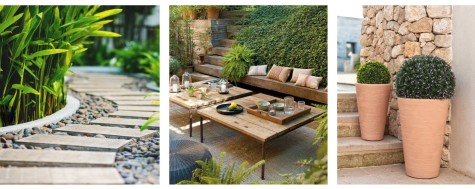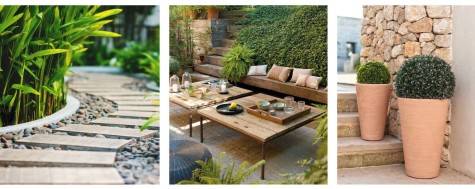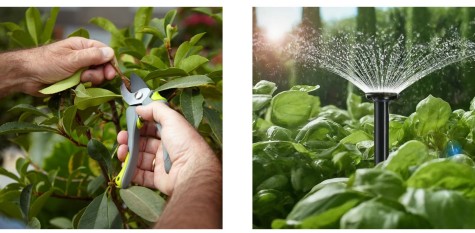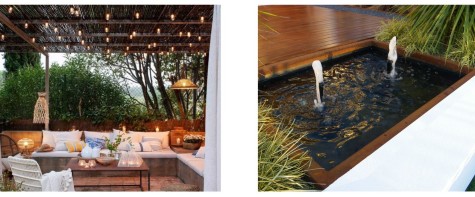El jardín Mediterráneo perfecto - The perfect Mediterranean garden
(English below)
La Costa Blanca es el escenario ideal para un jardín mediterráneo, con su clima soleado, inviernos suaves y una variedad de plantas adaptadas al entorno que aportan belleza, color y aroma durante todo el año. Si deseas convertir tu jardín en un oasis que encaje perfectamente con el estilo mediterráneo, aquí tienes algunas ideas y consejos.
- Elige las Plantas Ideales para el Clima Mediterráneo
Opta por plantas nativas de la región mediterránea, que no solo están adaptadas a la sequía, sino que requieren un bajo mantenimiento:
- Lavanda: Con su característico aroma y flores de un color lila intenso, la lavanda es ideal para bordes y setos bajos. Además, su aroma repele insectos.
- Olivo: Este árbol de crecimiento lento simboliza el Mediterráneo. Además de su belleza y sombra, el olivo requiere poca agua y es resistente a las altas temperaturas.
- Bugambilia: Perfecta para añadir un toque vibrante con sus flores rosas, púrpuras y naranjas. Es ideal para trepar muros y pérgolas.
- Romero y Tomillo: Estas aromáticas son fáciles de cultivar y dan un toque único a cualquier jardín mediterráneo. Son ideales para rocallas y combinan bien en jardineras o a lo largo de caminos.
- Diseño del Espacio
Para capturar la esencia mediterránea, mantén un enfoque simple y natural. Aquí tienes algunas ideas de diseño:
- Senderos de Piedra Natural: Crea caminos con piedras naturales o grava que guíen a través del jardín y hacia zonas de descanso. Los tonos terrosos y la irregularidad de la piedra evocan la sencillez y la rusticidad del estilo mediterráneo.
- Terrazas o Áreas de Descanso: Las terrazas y zonas de estar al aire libre, amuebladas con sillas de hierro forjado o madera, son un elemento esencial. Puedes añadir una mesa baja de cerámica o terracota para un rincón encantador.
- Macetas de Terracota: Decora el jardín con macetas de terracota que incluyan aromáticas, como lavanda o albahaca, y flores de colores. Estas macetas también funcionan bien en terrazas y patios interiores.
- Cómo Mantener un Jardín Mediterráneo
El mantenimiento de un jardín mediterráneo es bastante sencillo, pero sigue estos consejos clave para mantenerlo en su mejor forma:
- Riego Inteligente: Aunque la mayoría de las plantas mediterráneas resisten bien la sequía, instala un sistema de riego por goteo para asegurar que reciban agua en la base, especialmente durante los meses más calurosos.
- Poda Regular: Para mantener las formas y el crecimiento controlado, especialmente en lavanda, romero y bugambilia, realiza podas ligeras al final de la floración. Esto fomenta su crecimiento compacto y la próxima floración.
- Acolchado Natural: Usa grava o corteza en el suelo para reducir la evaporación y mantener el terreno fresco. Además, da un aspecto rústico y reduce la aparición de malezas.
- Añade Elementos Clásicos del Estilo Mediterráneo
- Fuentes y Estanques: Las fuentes pequeñas de agua crean un sonido relajante y ayudan a refrescar el ambiente en los días calurosos.
- Iluminación Ambiental: Coloca luces tenues alrededor del jardín para disfrutar de él también en las noches. Las lámparas solares o linternas colgantes en tonos cálidos aumentan el encanto del espacio al anochecer.
- Pérgolas y Sombra Natural: Instala pérgolas cubiertas de bugambilia o uvas para una sombra natural que proteja en las zonas de descanso.
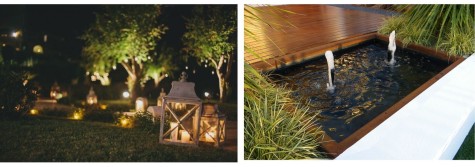
- Beneficios del Jardín Mediterráneo
El jardín mediterráneo no solo se adapta perfectamente al clima de la Costa Blanca, sino que también contribuye a la sostenibilidad, usando plantas de bajo consumo hídrico y materiales naturales. Además, requiere menos mantenimiento y está pensado para durar, manteniendo un aspecto elegante y acogedor todo el año.
--------------------------------------------------------------------------------------------------------------------------------------------------------------------
(ENGLISH VERSION)
How to Create the Perfect Mediterranean Garden
The Costa Blanca is the ideal setting for a Mediterranean garden, with its sunny climate, mild winters and a variety of plants adapted to the environment that provide beauty, colour and scent all year round. If you want to turn your garden into an oasis that fits in perfectly with the Mediterranean style, here are some ideas and tips.
-
Choose the Ideal Plants for the Mediterranean Climate
Opt for plants native to the Mediterranean region, which are not only adapted to drought, but also require low maintenance:
- Lavender: With its characteristic scent and deep lilac-coloured flowers, lavender is ideal for borders and low hedges. In addition, its scent repels insects.
- Olive tree: This slow-growing tree symbolises the Mediterranean. In addition to its beauty and shade, the olive tree requires little water and is resistant to high temperatures.
- Bougainvillea: Perfect for adding a vibrant touch with its pink, purple and orange flowers. Ideal for climbing walls and pergolas.
- Rosemary and Thyme: These aromatic herbs are easy to grow and add a unique touch to any Mediterranean garden. They are ideal for rockeries and combine well in window boxes or along paths.
-
Space Design
To capture the essence of the Mediterranean, keep it simple and natural. Here are some design ideas:
- Natural Stone Paths: Create paths with natural stones or gravel that lead through the garden and into seating areas. The earthy tones and irregularity of the stone evoke the simplicity and rusticity of the Mediterranean style.
- Terraces or seating areas: Terraces and outdoor seating areas, furnished with wrought iron or wooden chairs, are an essential element. You can add a low ceramic or terracotta table for a charming corner.
- Terracotta Pots: Decorate the garden with terracotta pots that include aromatics, such as lavender or basil, and colourful flowers. These pots also work well on terraces and interior patios.
- How to Maintain a Mediterranean Garden
Maintaining a Mediterranean garden is fairly straightforward, but follow these key tips to keep it in its best shape:
- Smart Watering: Although most Mediterranean plants withstand drought well, install a drip irrigation system to ensure they receive water at the base, especially during the warmer months.
- Regular pruning: To keep shapes and growth in check, especially lavender, rosemary and bougainvillea, prune lightly at the end of flowering. This encourages compact growth and the next flowering.
- Natural mulching: Use gravel or bark on the soil to reduce evaporation and keep the soil cool. It also gives a rustic look and reduces weeding.
- Add Classic Mediterranean Style Elements
- Fountains and Ponds: Small water fountains create a soothing sound and help to cool the atmosphere on hot days.
- Ambient Lighting: Place soft lights around the garden to enjoy the garden in the evenings as well. Solar lamps or hanging lanterns in warm tones add to the charm of the space in the evening.
- Pergolas and Natural Shade: Install pergolas covered with bougainvillea or grapes for natural shade to protect sitting areas.
- Benefits of the Mediterranean Garden
The Mediterranean garden is not only perfectly suited to the climate of the Costa Blanca, but also contributes to sustainability, using low water-consuming plants and natural materials. In addition, it requires less maintenance and is designed to last, maintaining an elegant and welcoming appearance all year round.


